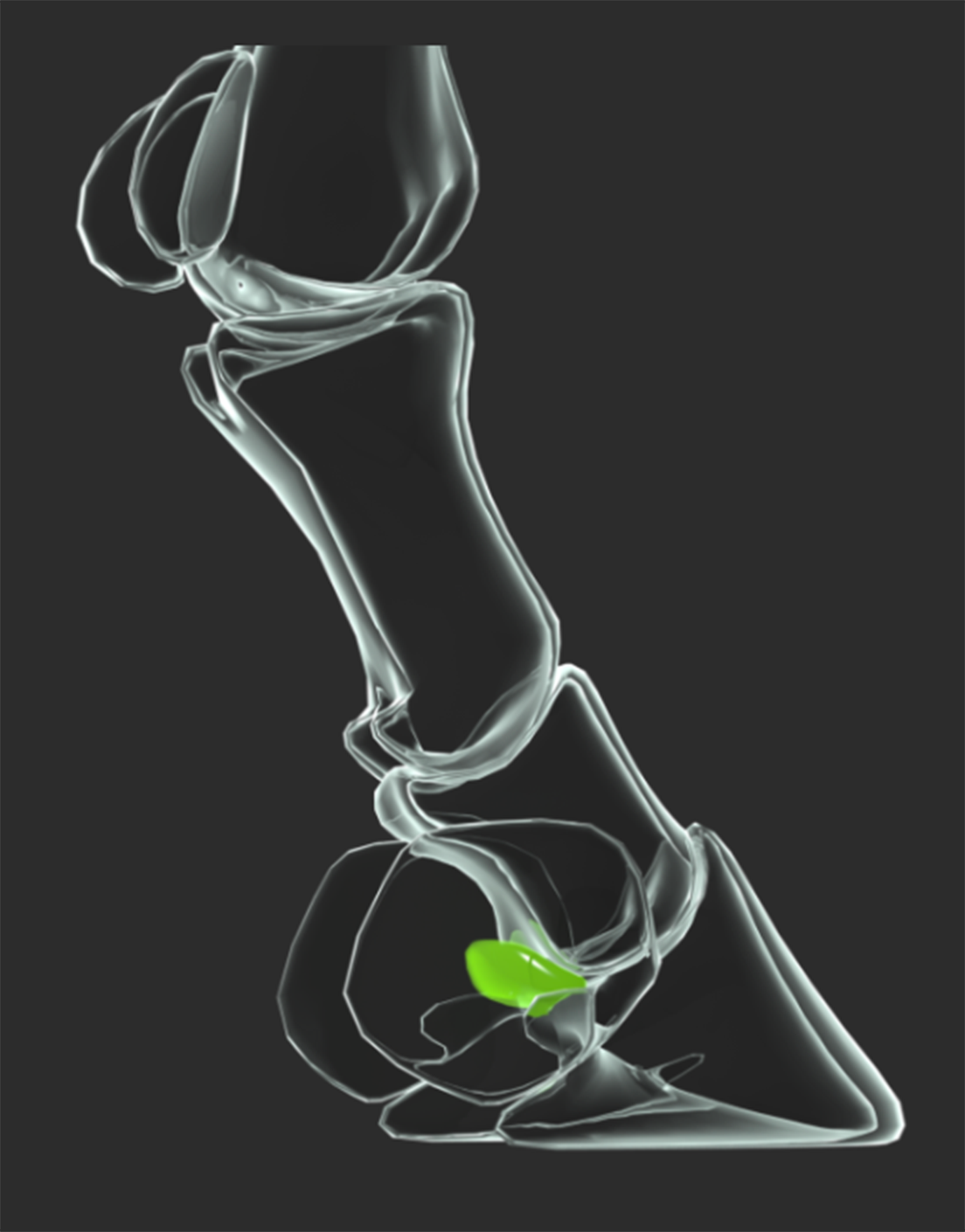About the disease
Navicular syndrome is a condition affecting the navicular bone structures.
It often occurs in both front feet and is most typically seen in mature riding horses, with Thoroughbreds and Quarter Horses being more susceptible. If left untreated it can lead to significant and even disabling lameness, with common manifestations including a shortening of the stride and increased tendency to stumble due to altered foot placement.
Navicular syndrome can lead to an imbalance in the bone remodelling process, resulting in excessive navicular bone resorption and/or abnormal mineralizations. This leads to more of the bone being dissolved than is replaced, leading to mineral loss and a weakening of the bone structure over time.
The navicular bone
The horse has a sesamoid bone called the navicular bone, located within the hoof.
The navicular region is an important structure in relation to lameness, particularly in the front feet, and is involved with a significant disease process called navicular disease or navicular syndrome.
Newer imaging techniques have shown that damage to the soft tissues in the region may be significant contributors to lameness and that multiple causes may result in visible lameness.

The glossary
Bone resorption is the process by which osteoclasts break down bone and release the minerals, resulting in a transfer of calcium from bone fluid to the blood.
Large, specialized multinucleate cells (cells with more than one nucleus) which absorb bone, allowing for the deposition of new bone and maintenance of bone strength. Osteoclasts secrete enzymes that dissolve the matrix of old bone tissue and acids that dissolve bone salts.
Definition: any drug of a class that inhibits the resorption of bone; used in the treatment of navicular bone disorders.
They function primarily by inhibiting osteoclast activity to balance the bone remodelling process.
The internal framework of a cell, composed largely of actin filaments and microtubules.
The injection of a substance directly into a muscle, typically used for particular forms of medication that are administered in small volumes.
Lameness in horses and other equidae is a term used to refer to any number of conditions where the animal fails to travel in a regular and sound manner on all four feet.
Lameness severity is typically evaluated on an AAEP scoring system of 1-5, with higher numbers indicating a more significant degree of impairment.
The term colic can encompass all forms of gastrointestinal conditions which cause pain as well as other causes of abdominal pain not involving the gastrointestinal tract.
There are a variety of different causes of colic, some of which can prove fatal without surgical intervention.
Also known as ossification or osteogenesis, it is the process of laying down new bone material by cells called osteoblasts.
A specialized bone cell that produces and deposits the materials needed for the development of new bone. They consist primarily of collagen fibers.
As new bone grows and hardens with the addition of calcium and phosphate, inactive osteoblasts become embedded in the bone matrix and develop into osteocytes.
The specialized cell membrane of an osteoclast that makes contact with the navicular bone and is structured to increase the surface area of the cell.
The ruffled border facilitates delivery of digestive enzymes and creates an acidic environment to permit the osteoclast to degrade bone. Products of the bone degradation are resorbed at this border.
Bone remodelling (or bone metabolism) is a lifelong process where mature bone tissue is removed from the skeleton (bone resorption) and new bone tissue is formed (bone formation or ossification).
These processes control the reshaping or replacement of bone following injuries like fractures but also micro-damage, which occurs during normal activity.
A natural process of self-destruction in certain cells. Also called programmed cell death.
Trimming and shoeing can greatly aid in correcting and maintaining foot balance, this is particularly important when dealing with navicular syndrome.